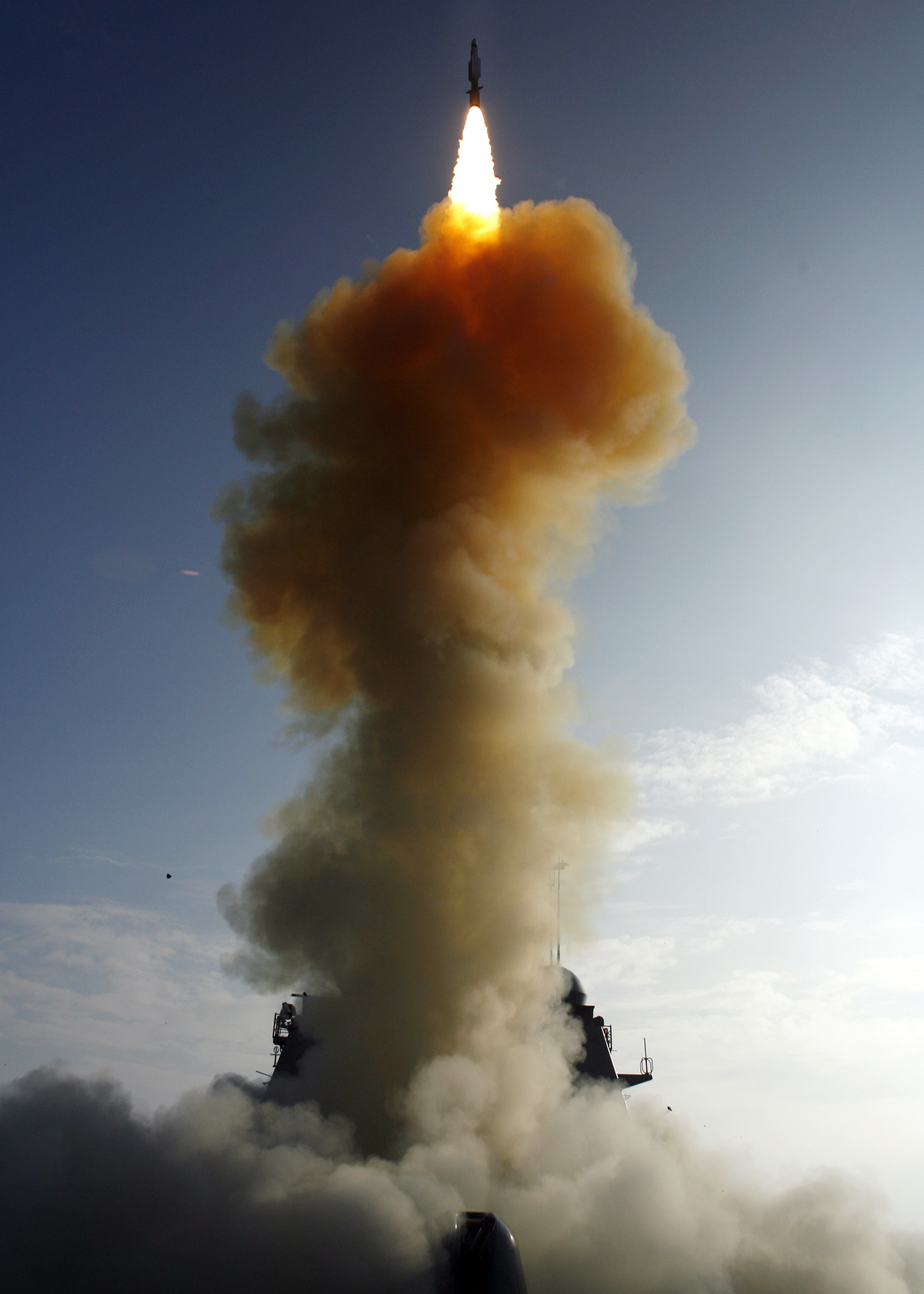Two years ago this month, a United States Navy STANDARD Missile SM-3 Block IA intercepted and destroyed a failed NRO satellite at an altitude of 133 nautical miles. The relative velocity at intercept was in excess of 22,000 mph.
The United States Navy/Raytheon Missile Systems SM-3 (RIM-161) is the sea-based arm of the Missile Defense Agency’s Ballistic Missile Defense System (BMDS). The 3-stage missile carries a Kinetic Warhead (KW) that provides an exoatmospheric hit-to-kill capability.
In order to ensure a lethal hit, the SM-3 KW guides to a specific aimpoint on the target’s airframe. The ability to reliably do so has been impressively demonstrated in a series of intercept flight tests that began in 2002.
SM-3 rounds are launched from the MK-41 Vertical Launcher System (VLS) aboard United States Navy cruisers and destroyers. The at-sea basing concept provides for a high degree of operational flexibility in the ballistic missile intercept mission.
The Lockheed Martin-built USA-193 was launched on a classified mission from California’s Vandenberg Air Force Base (VAFB) at 2100 UTC on Thursday, 14 December 2006. Shortly after reaching orbit, contact with the 5,000-lb satellite was lost.
By January 2008, USA-193’s orbit had decayed to such an extent that its reentry appeared imminent. Such events raise concerns for the safety of those on Earth who reside within the debris impact footprint. However, there was an additional concern in the case of USA-193. The satellite still had about 1,000-lbs of hydrazine onboard.
Should the USA-193 hydrazine tank survive reentry, those living in the impact area would be exposed to a highly toxic cloud of the volatile substance. Officials concluded that the safest thing to do was to destroy the satellite before it reentered the atmosphere.
On Thursday, 21 February 2008, the USS Lake Erie was on station in the Pacific Ocean west of Hawaii. The US Navy cruiser fired a single SM-3 interceptor at 0326 UTC. Minutes later, the missile’s KW took out the satellite and dispersed its hydrazine load into space. Mission accomplished!
In the aftermath of the satellite take-down, Russia and others predictably accused the United States of using the USA-193 hydrazine issue as an excuse to demonstrate SM-3’s anti-satellite capability. While such capability was indeed demonstrated, noteworthy is the fact that all systems modified to execute the satellite intercept have subsequently been returned to a ballistic missile defense posture.

